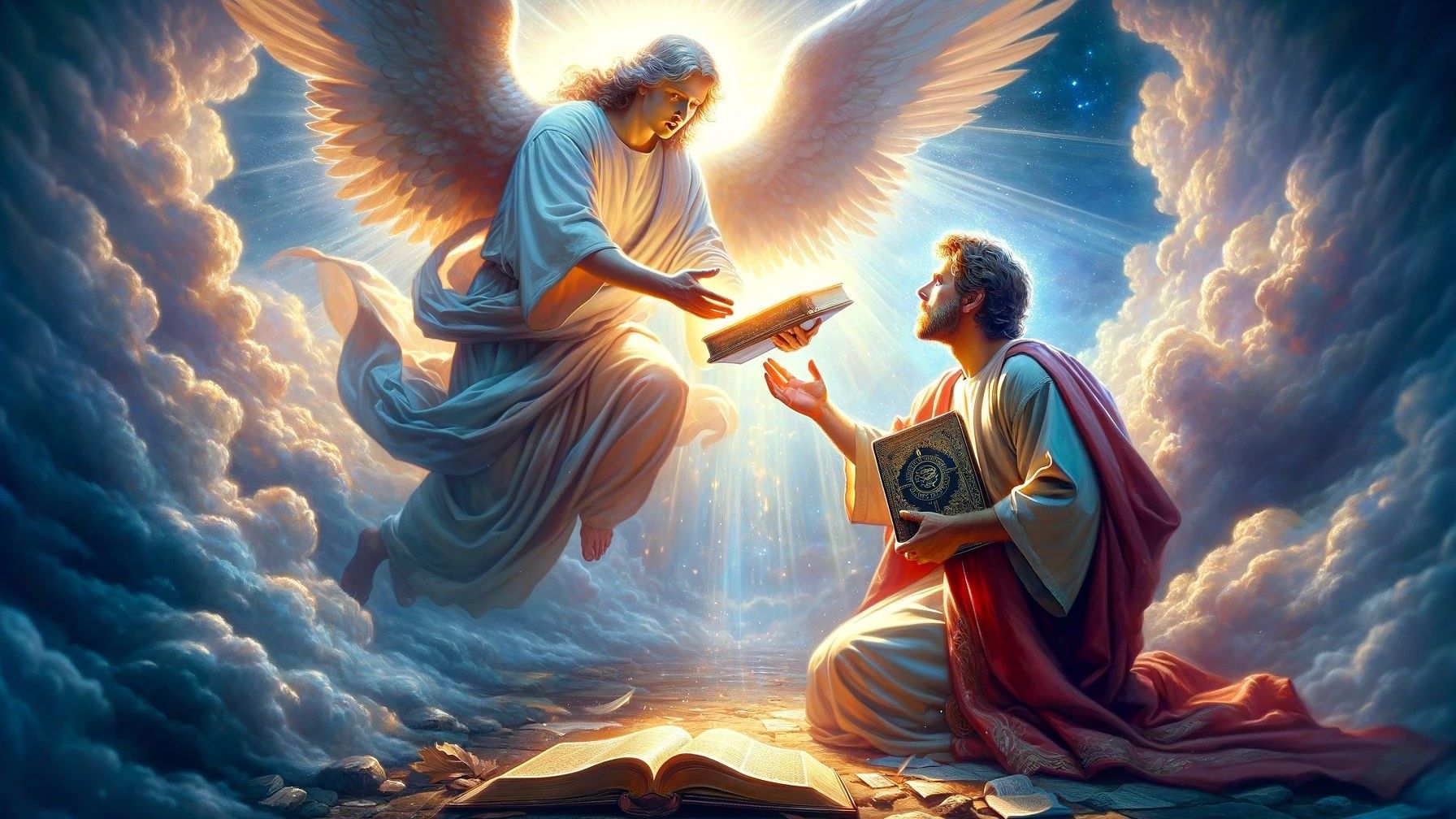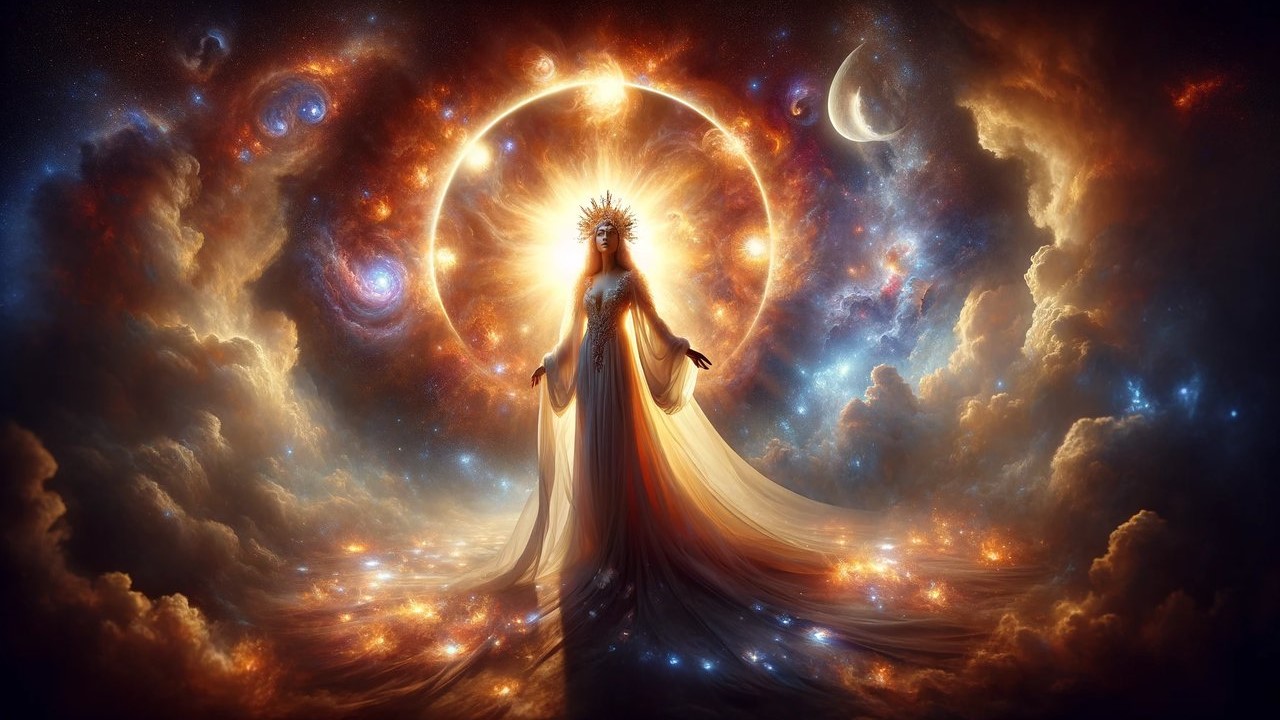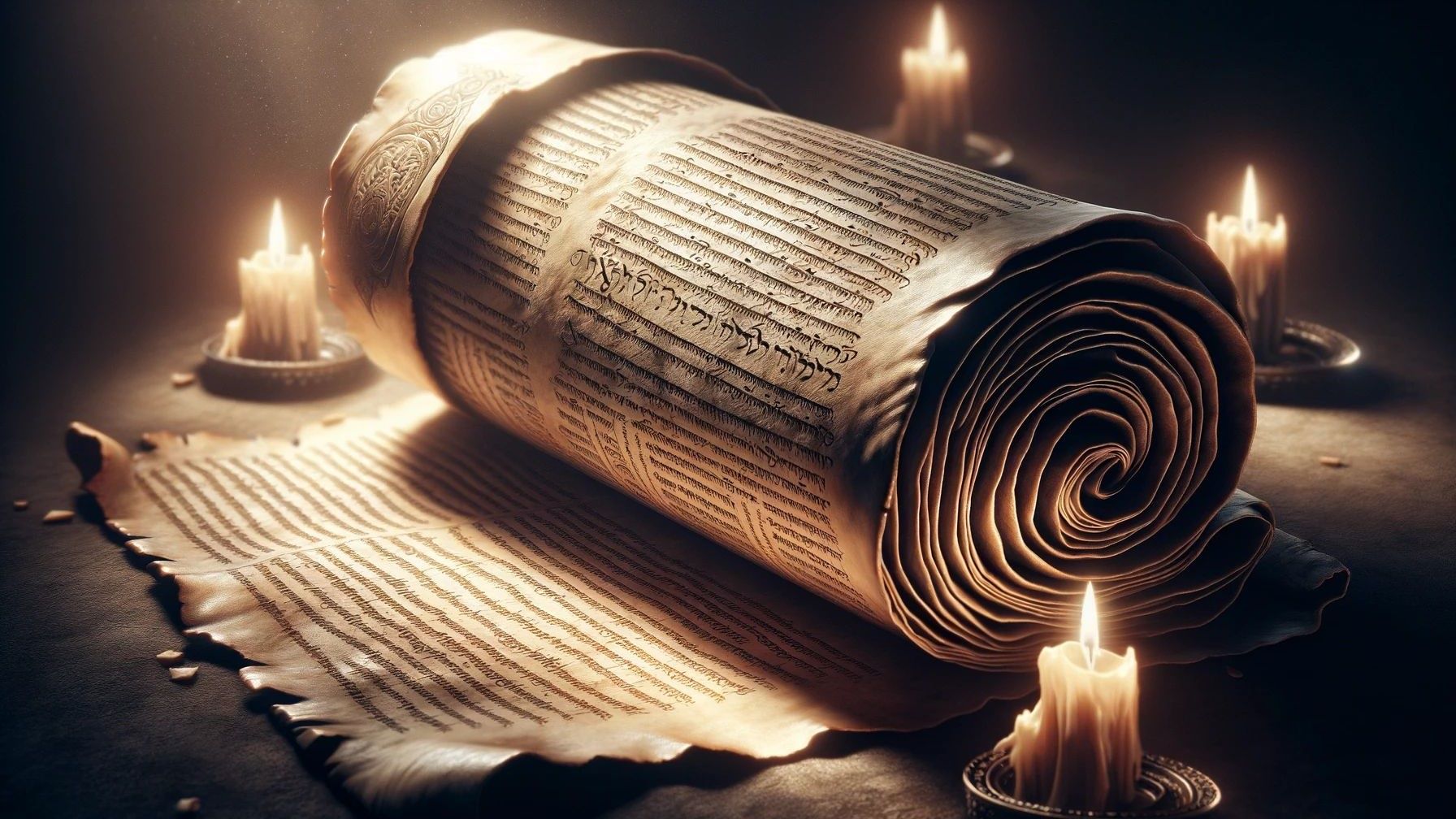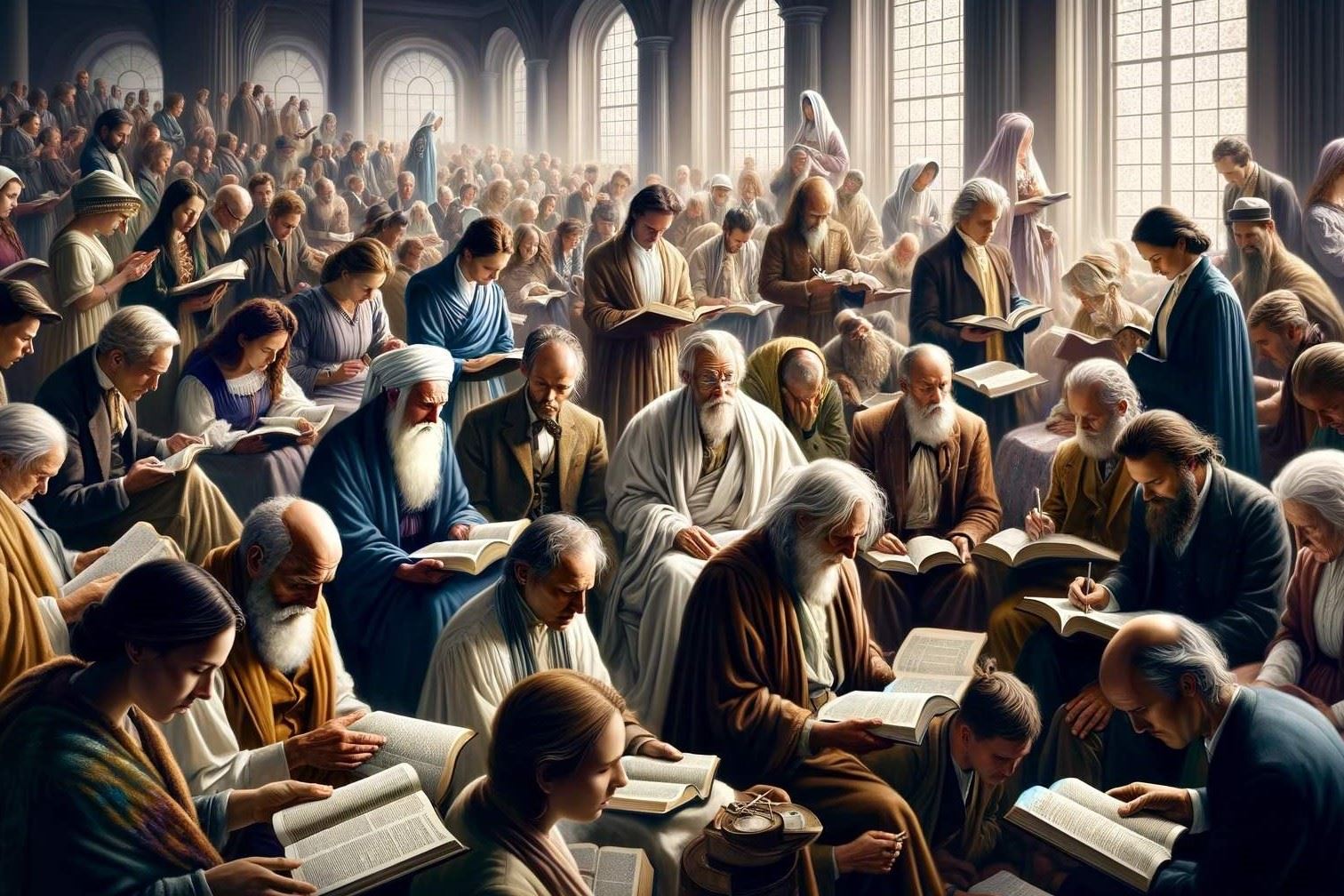Home>Bible Facts>What Disasters Are In The Book Of Revelation
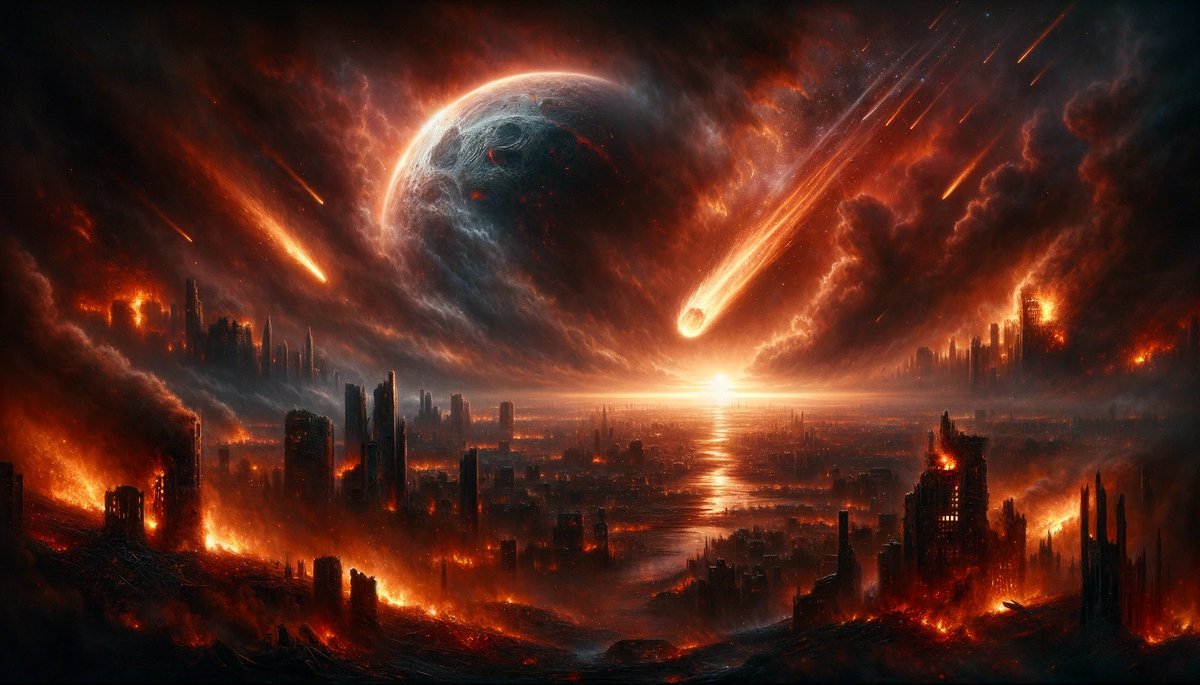

Bible Facts
What Disasters Are In The Book Of Revelation
Published: February 11, 2024
Ericka Andersen, an editor at Christian.net, expertly merges digital strategy with content creation, focusing on faith and societal issues. Her communication skills enhance the platform's engaging narratives, fostering meaningful dialogue on belief's impact on society.
Discover fascinating insights into the disasters mentioned in the Book of Revelation with our comprehensive guide to Bible facts. Explore the significance and impact of these cataclysmic events.
(Many of the links in this article redirect to a specific reviewed product. Your purchase of these products through affiliate links helps to generate commission for Christian.net, at no extra cost. Learn more)
Table of Contents
Introduction
The Book of Revelation, the final book of the New Testament, is a profound and enigmatic work that has captivated readers for centuries. It is a book of prophecy, filled with vivid imagery and symbolic language, and it offers a glimpse into the end times and the ultimate triumph of good over evil.
Revelation is attributed to the apostle John, who received a series of visions while exiled on the island of Patmos. These visions, conveyed through powerful symbolism, depict a sequence of events that will unfold leading up to the second coming of Christ and the establishment of God's eternal kingdom.
The book opens with a message to the seven churches in Asia Minor, setting the stage for the dramatic and apocalyptic events that are to follow. As the narrative unfolds, it becomes clear that the book is not merely a record of future events, but a powerful call to faithfulness and perseverance in the face of persecution and tribulation.
Revelation is divided into three main sections: the seven seals, the seven trumpets, and the seven bowls of wrath. Each of these sections unveils a series of catastrophic events and divine judgments that will shake the world to its core. These disasters are depicted in vivid and terrifying detail, serving as a stark reminder of the consequences of sin and the ultimate sovereignty of God.
As we delve into the intricate tapestry of Revelation, we are confronted with a vision of cosmic upheaval, spiritual warfare, and the ultimate triumph of God's redemptive plan. It is a book that challenges us to consider the eternal significance of our choices and actions, and to remain steadfast in our faith amidst the tumultuous events that are yet to unfold.
In the subsequent sections, we will explore the specific disasters and judgments outlined in the book of Revelation, seeking to unravel their significance and implications for humanity and the world at large. Through this exploration, we will gain a deeper understanding of the profound truths and timeless wisdom contained within this remarkable biblical text.
Read more: What Is Babylon In The Book Of Revelation
The Seven Seals
The opening of the seven seals is a pivotal and awe-inspiring sequence in the book of Revelation. As each seal is broken, a new and cataclysmic event is unleashed upon the earth, signaling the unfolding of divine judgment and the culmination of God's redemptive plan. The imagery and symbolism associated with the opening of these seals are both profound and haunting, painting a vivid picture of the tumultuous events that will shape the course of human history.
The first four seals are commonly known as the "four horsemen of the apocalypse." Each horseman represents a different aspect of divine judgment and human suffering. The first horseman rides a white horse, symbolizing conquest and the spread of false ideologies. The second horseman rides a red horse, representing war and bloodshed. The third horseman rides a black horse, signifying famine and scarcity. The fourth horseman rides a pale horse, embodying death and the grave. Together, these horsemen serve as harbingers of widespread devastation and despair.
As the fifth seal is broken, the souls of martyrs cry out for justice, highlighting the suffering and persecution endured by those who remain faithful to God in the face of adversity. This poignant imagery serves as a powerful reminder of the cost of discipleship and the ultimate triumph of righteousness over oppression.
The opening of the sixth seal unleashes cosmic upheaval, with cataclysmic events such as earthquakes and celestial disturbances shaking the foundations of the earth. This dramatic imagery underscores the magnitude of the divine judgment that is being unleashed upon the world, serving as a sobering reminder of the consequences of human rebellion and sin.
Finally, the seventh seal heralds a profound silence in heaven, setting the stage for the subsequent series of trumpet judgments. This moment of solemn stillness underscores the gravity of the events that are about to unfold, serving as a prelude to the escalating intensity of the divine judgments yet to come.
The opening of the seven seals in the book of Revelation is a haunting and evocative portrayal of divine judgment and human suffering. It serves as a stark reminder of the consequences of sin and the ultimate sovereignty of God over the course of human history. As we contemplate the significance of these seals, we are compelled to consider the eternal implications of our choices and actions, and to seek refuge in the redemptive hope offered through faith in Christ.
The Seven Trumpets
The seven trumpets in the book of Revelation herald a series of devastating judgments that are unleashed upon the earth, each trumpet blast unleashing a catastrophic event of cosmic proportions. The imagery associated with the sounding of these trumpets is both vivid and haunting, serving as a stark reminder of the consequences of human rebellion and the ultimate sovereignty of God over the course of human history.
The first trumpet brings forth hail and fire mixed with blood, raining down upon the earth and causing widespread devastation. This cataclysmic event serves as a powerful symbol of divine judgment, underscoring the severity of the consequences of human sin and disobedience.
The sounding of the second trumpet unleashes a great mountain burning with fire, cast into the sea and resulting in a third of the sea turning to blood. This apocalyptic imagery speaks to the magnitude of the divine judgment being unleashed upon the earth, signaling a profound disruption of the natural order and the devastating impact of human folly.
As the third trumpet is sounded, a great star called Wormwood falls from the sky, poisoning a third of the earth's freshwater sources. This chilling imagery serves as a sobering reminder of the far-reaching consequences of human sin, highlighting the pervasive nature of divine judgment and the inescapable reality of the repercussions of rebellion against God.
The sounding of the fourth trumpet brings about a dramatic dimming of the sun, moon, and stars, casting a shadow over a third of the earth. This celestial upheaval serves as a powerful symbol of the cosmic ramifications of divine judgment, underscoring the profound and far-reaching impact of human disobedience and the ultimate sovereignty of God over the created order.
The fifth trumpet unleashes a horde of locusts upon the earth, tormenting those who do not bear the seal of God on their foreheads. This haunting imagery serves as a vivid portrayal of the spiritual warfare and torment that accompanies divine judgment, highlighting the stark contrast between the fate of the faithful and the plight of those who reject God's redemptive offer.
The sounding of the sixth trumpet unleashes an army of two hundred million horsemen, bringing widespread destruction and death upon the earth. This apocalyptic imagery serves as a chilling reminder of the catastrophic consequences of human rebellion and the ultimate triumph of divine justice over the forces of darkness.
Finally, the seventh trumpet heralds the culmination of God's redemptive plan, unleashing a series of powerful voices in heaven and culminating in the proclamation of the reign of God over all creation. This triumphant imagery serves as a powerful reminder of the ultimate victory of righteousness over evil and the establishment of God's eternal kingdom.
The seven trumpets in the book of Revelation offer a sobering portrayal of divine judgment and the consequences of human rebellion. As we contemplate the significance of these trumpets, we are confronted with the profound truths and timeless wisdom contained within this remarkable biblical text, compelling us to consider the eternal implications of our choices and actions, and to seek refuge in the redemptive hope offered through faith in Christ.
The Seven Bowls of Wrath
The seven bowls of wrath, as depicted in the book of Revelation, represent the culmination of divine judgment and the outpouring of God's righteous anger upon a world engulfed in sin and rebellion. Each bowl, when poured out, unleashes a catastrophic and unrelenting plague upon the earth, serving as a harrowing reminder of the consequences of human defiance and the ultimate sovereignty of God over the course of human history.
The first bowl brings forth painful and malignant sores upon those who have aligned themselves with the forces of darkness, inflicting suffering and anguish upon the unrepentant. This visceral imagery serves as a stark reminder of the consequences of rejecting God's redemptive offer and choosing to walk in opposition to His divine will.
The pouring out of the second bowl results in the sea turning to blood, causing the death of every living creature in the sea. This catastrophic event serves as a powerful symbol of the pervasive nature of divine judgment and the far-reaching consequences of human sin, highlighting the devastating impact of rebellion against God.
As the third bowl is poured out, the rivers and springs of water become blood, underscoring the magnitude of the divine judgment being unleashed upon the earth and the inescapable reality of the repercussions of human disobedience. This haunting imagery serves as a sobering reminder of the pervasive nature of divine judgment and the inescapable consequences of human rebellion against God.
The pouring out of the fourth bowl results in the scorching of the sun, causing intense heat to sear the earth and its inhabitants. This cataclysmic event serves as a vivid portrayal of the cosmic ramifications of divine judgment, underscoring the profound and far-reaching impact of human disobedience and the ultimate sovereignty of God over the created order.
The fifth bowl brings darkness upon the throne of the beast, plunging the kingdom of the beast into turmoil and distress. This haunting imagery serves as a powerful symbol of the spiritual warfare and torment that accompanies divine judgment, highlighting the stark contrast between the fate of the faithful and the plight of those who reject God's redemptive offer.
The pouring out of the sixth bowl results in the drying up of the Euphrates River, preparing the way for the kings of the east. This apocalyptic imagery serves as a chilling reminder of the catastrophic consequences of human rebellion and the ultimate triumph of divine justice over the forces of darkness.
Finally, the seventh bowl heralds a great earthquake, unparalleled in its magnitude, resulting in the complete devastation of the great city and the splitting of cities around the world. This cataclysmic event serves as a powerful reminder of the ultimate victory of righteousness over evil and the establishment of God's eternal kingdom.
The seven bowls of wrath in the book of Revelation offer a sobering portrayal of divine judgment and the consequences of human rebellion. As we contemplate the significance of these bowls, we are confronted with the profound truths and timeless wisdom contained within this remarkable biblical text, compelling us to consider the eternal implications of our choices and actions, and to seek refuge in the redemptive hope offered through faith in Christ.
Other Disasters and Judgments
In addition to the dramatic sequences of the seven seals, seven trumpets, and seven bowls of wrath, the book of Revelation depicts a myriad of other disasters and judgments that unfold as part of the apocalyptic narrative. These events serve as poignant reminders of the profound consequences of human rebellion and the ultimate sovereignty of God over the course of human history.
One of the most striking depictions is that of the two witnesses who are granted authority to prophesy and perform miraculous signs, only to be killed by the forces of evil. Their bodies lie in the streets of the great city for three and a half days, serving as a chilling testament to the persecution endured by those who remain faithful to God in the face of opposition and hostility.
The emergence of the great red dragon, symbolizing the forces of darkness and spiritual warfare, serves as a powerful reminder of the cosmic battle between good and evil. The dragon seeks to devour the woman who represents God's people, highlighting the relentless assault faced by those who stand firm in their faith amidst the tumult of the end times.
The image of the beast rising from the sea, adorned with blasphemous names and granted authority to wage war against the saints, underscores the pervasive nature of opposition to God's redemptive plan. This chilling portrayal serves as a stark reminder of the spiritual warfare and persecution that will confront believers as the events of Revelation unfold.
The depiction of the great prostitute, seated on many waters and intoxicated with the blood of the saints, serves as a haunting symbol of spiritual seduction and moral corruption. This vivid imagery underscores the pervasive allure of worldly power and the devastating consequences of spiritual compromise.
The ultimate triumph of Christ and the establishment of God's eternal kingdom are vividly portrayed in the climactic battle of Armageddon, where the forces of evil are decisively defeated, and the reign of God is established over all creation. This triumphant imagery serves as a powerful reminder of the ultimate victory of righteousness over evil and the fulfillment of God's redemptive plan.
As we contemplate these additional disasters and judgments depicted in the book of Revelation, we are confronted with the profound truths and timeless wisdom contained within this remarkable biblical text. These events serve as a poignant reminder of the eternal significance of our choices and actions, compelling us to seek refuge in the redemptive hope offered through faith in Christ.
Conclusion
The book of Revelation stands as a profound and enigmatic portrayal of the end times, offering a vivid tapestry of apocalyptic imagery and divine judgment. Through the intricate sequences of the seven seals, seven trumpets, and seven bowls of wrath, as well as the myriad of other disasters and judgments, Revelation presents a compelling narrative of cosmic upheaval, spiritual warfare, and the ultimate triumph of God's redemptive plan.
As we journey through the cataclysmic events and divine judgments depicted in Revelation, we are confronted with the profound consequences of human rebellion and the inescapable reality of divine sovereignty. The vivid imagery associated with the seals, trumpets, and bowls serves as a haunting reminder of the far-reaching impact of sin and the ultimate authority of God over the course of human history.
Amidst the turmoil and devastation unveiled in Revelation, there is a resounding message of hope and redemption. The book ultimately points to the triumph of righteousness over evil, the establishment of God's eternal kingdom, and the fulfillment of His redemptive plan for humanity. It serves as a powerful call to faithfulness and perseverance in the face of persecution and tribulation, urging readers to remain steadfast in their faith and to embrace the redemptive hope offered through Christ.
Revelation challenges us to consider the eternal significance of our choices and actions, compelling us to seek refuge in the redemptive hope offered through faith in Christ. It serves as a poignant reminder of the ultimate victory of righteousness over evil and the assurance of God's sovereignty over all creation.
As we conclude our exploration of the disasters and judgments in the book of Revelation, we are reminded of the timeless truths and profound wisdom contained within this remarkable biblical text. It beckons us to consider the eternal implications of our choices and actions, and to embrace the redemptive hope offered through faith in Christ amidst the tumultuous events that are yet to unfold.


